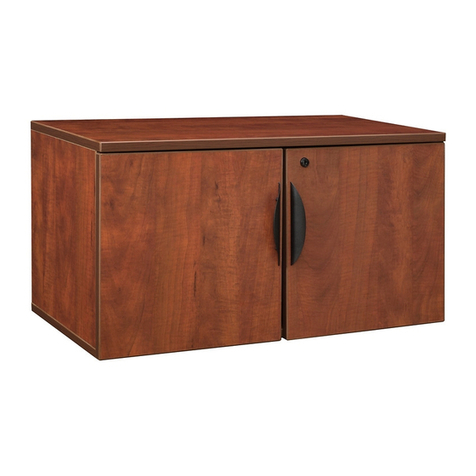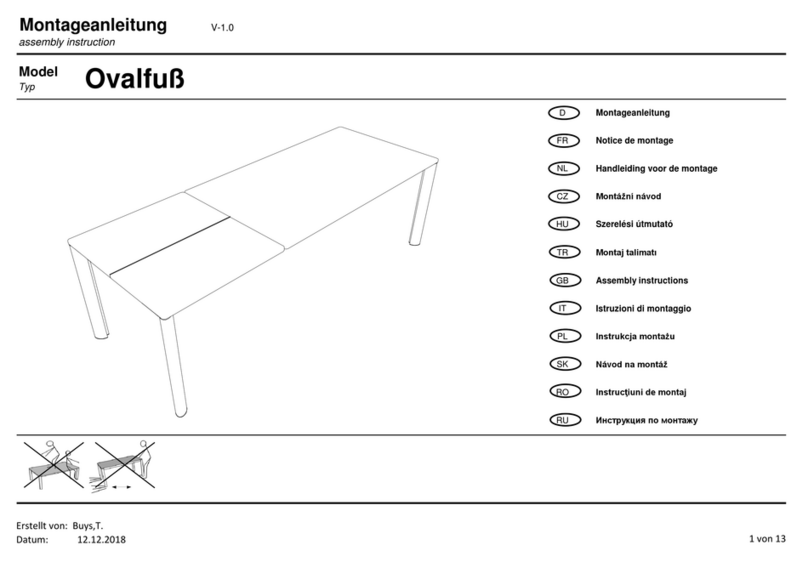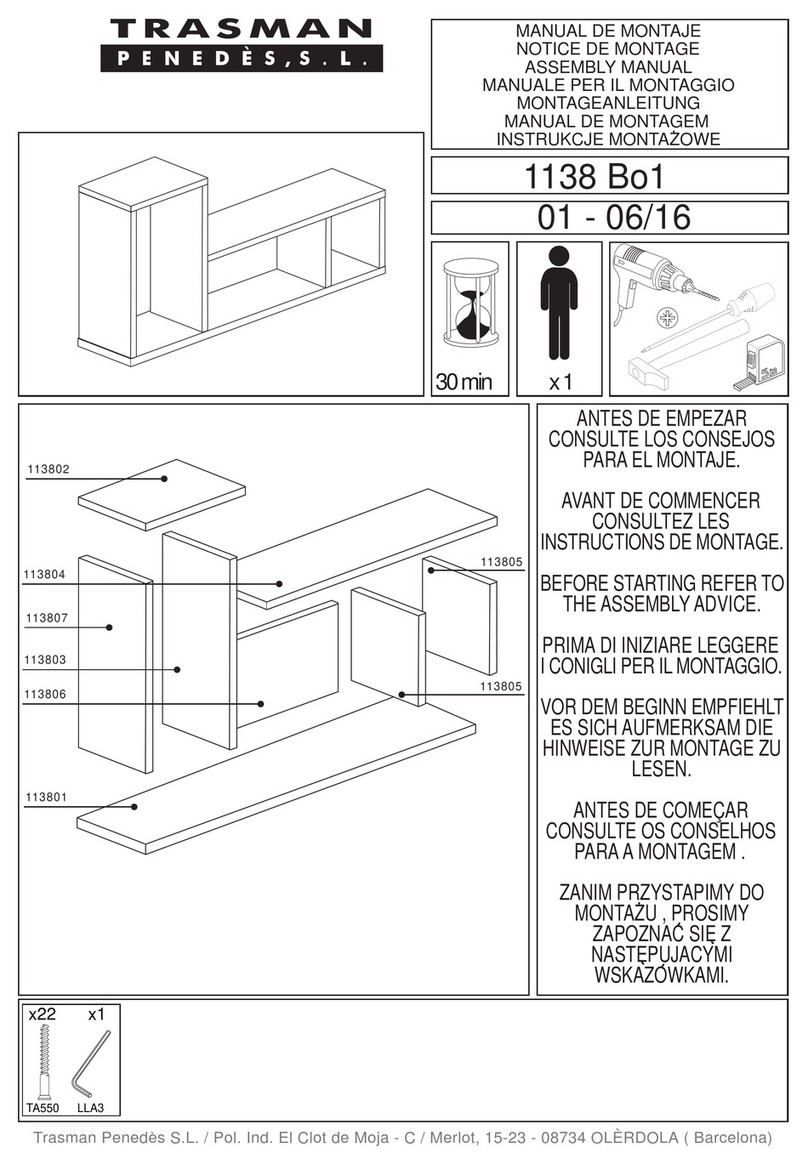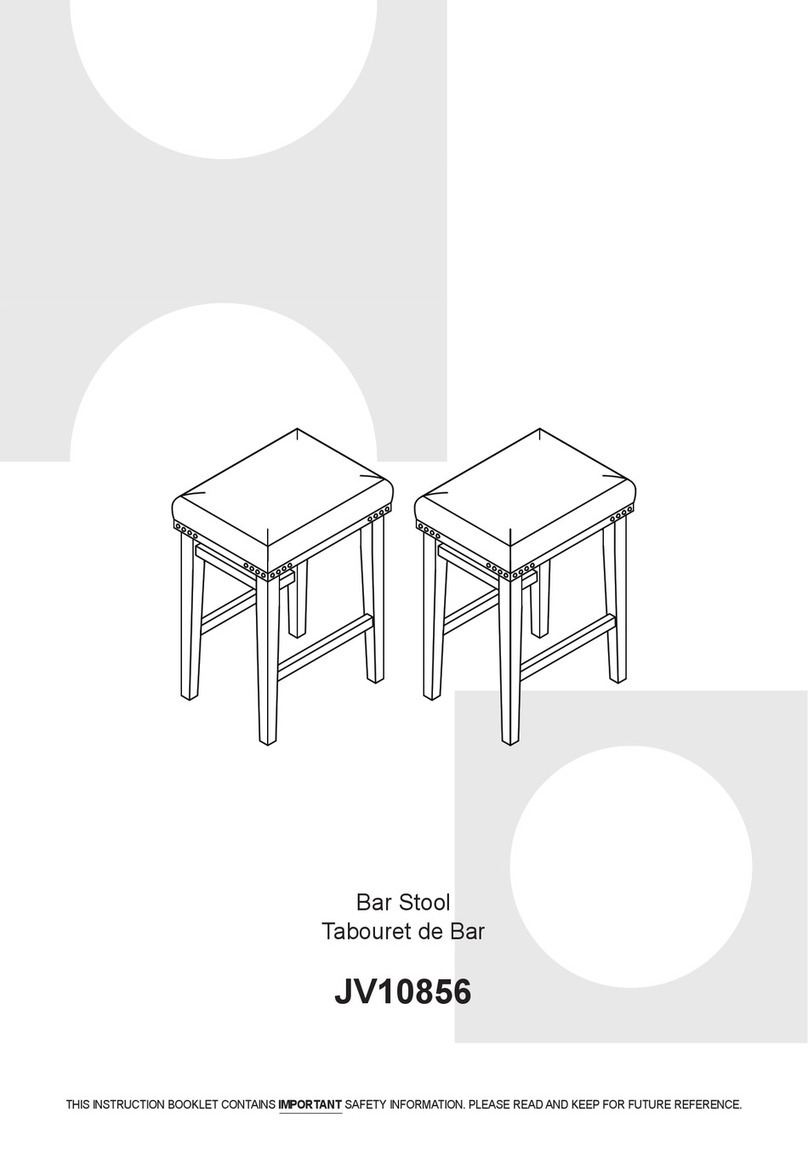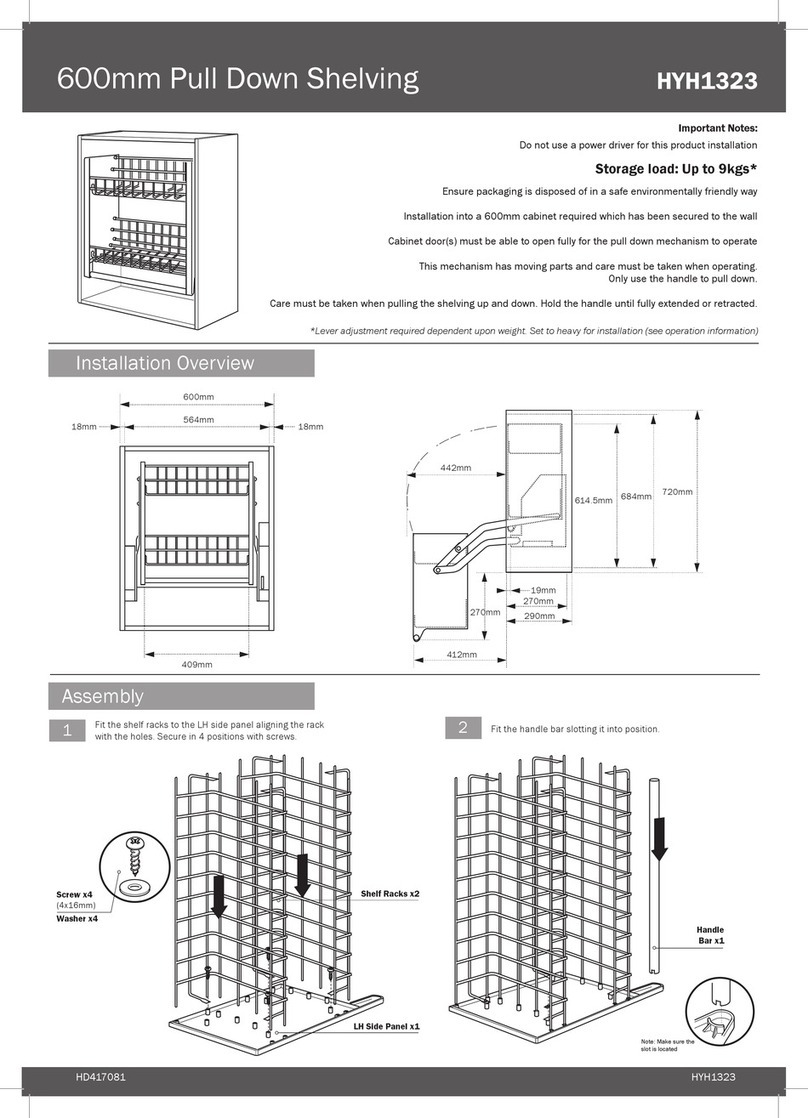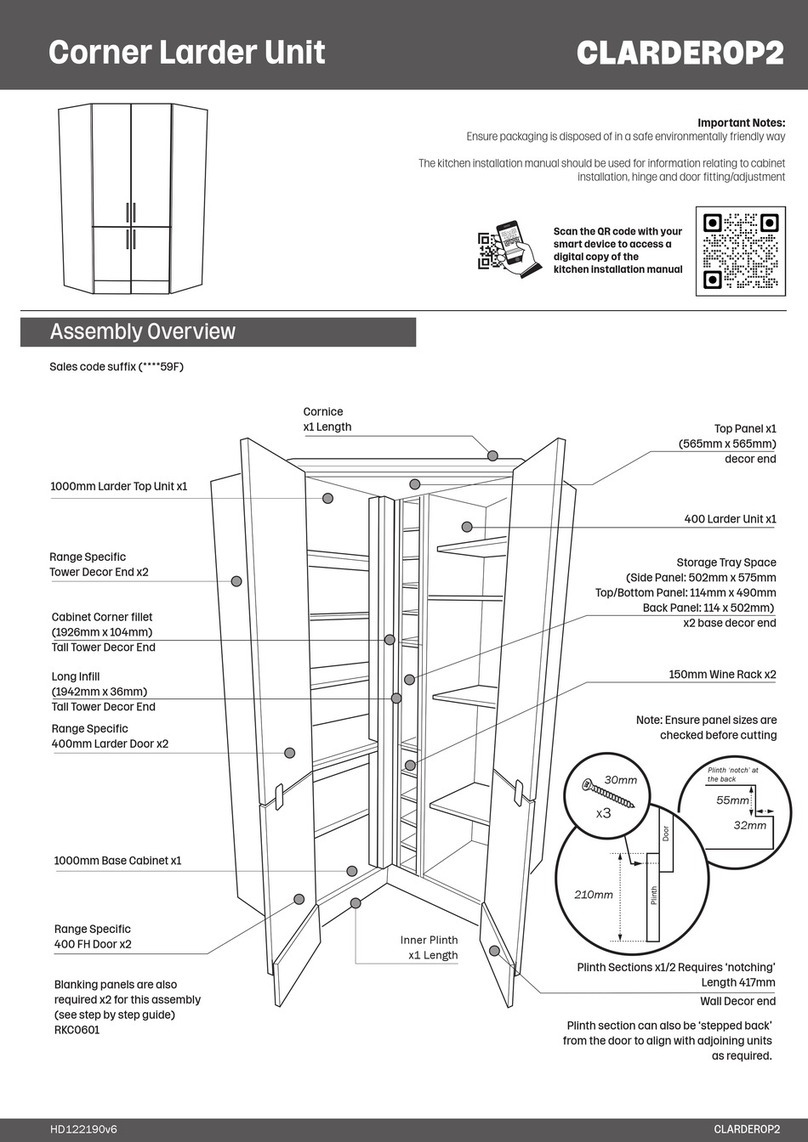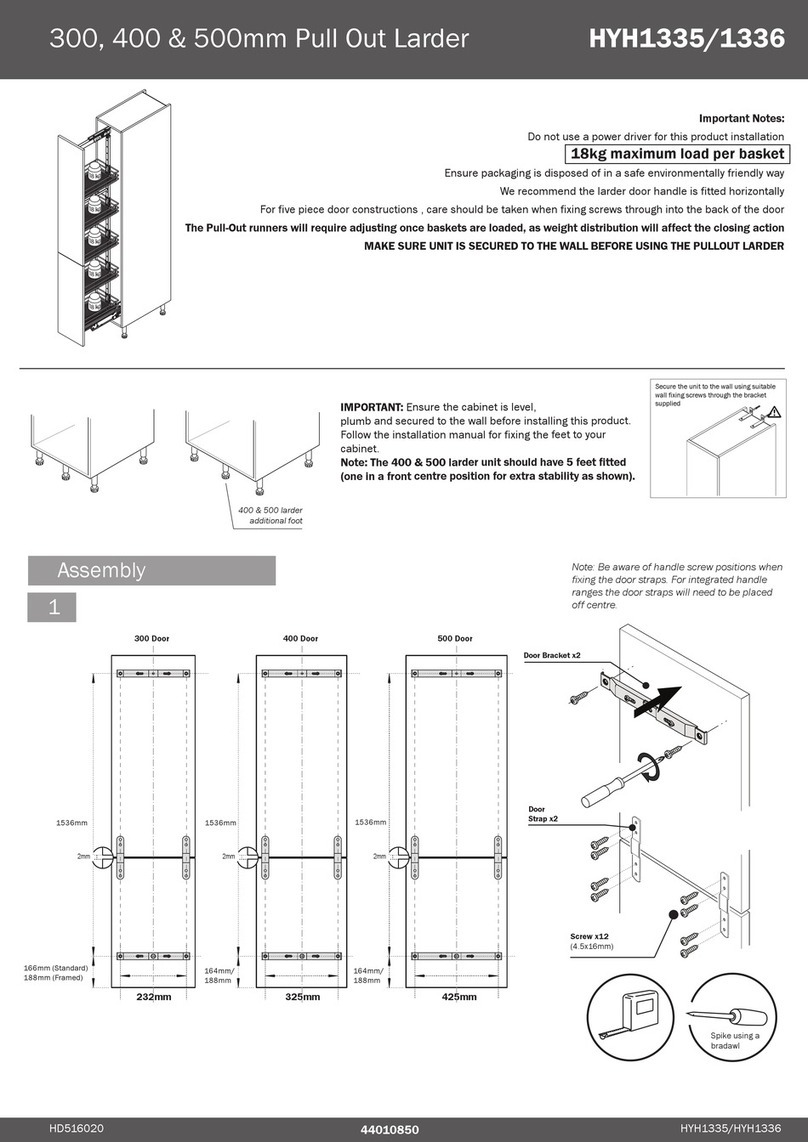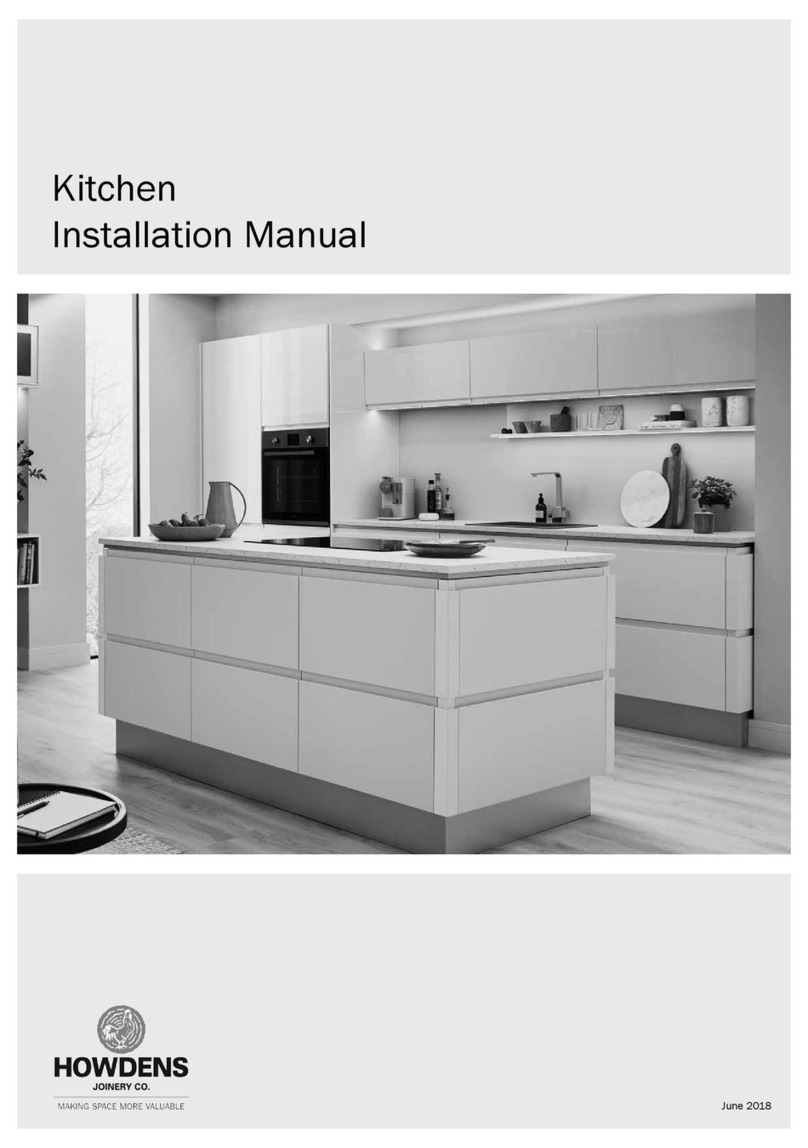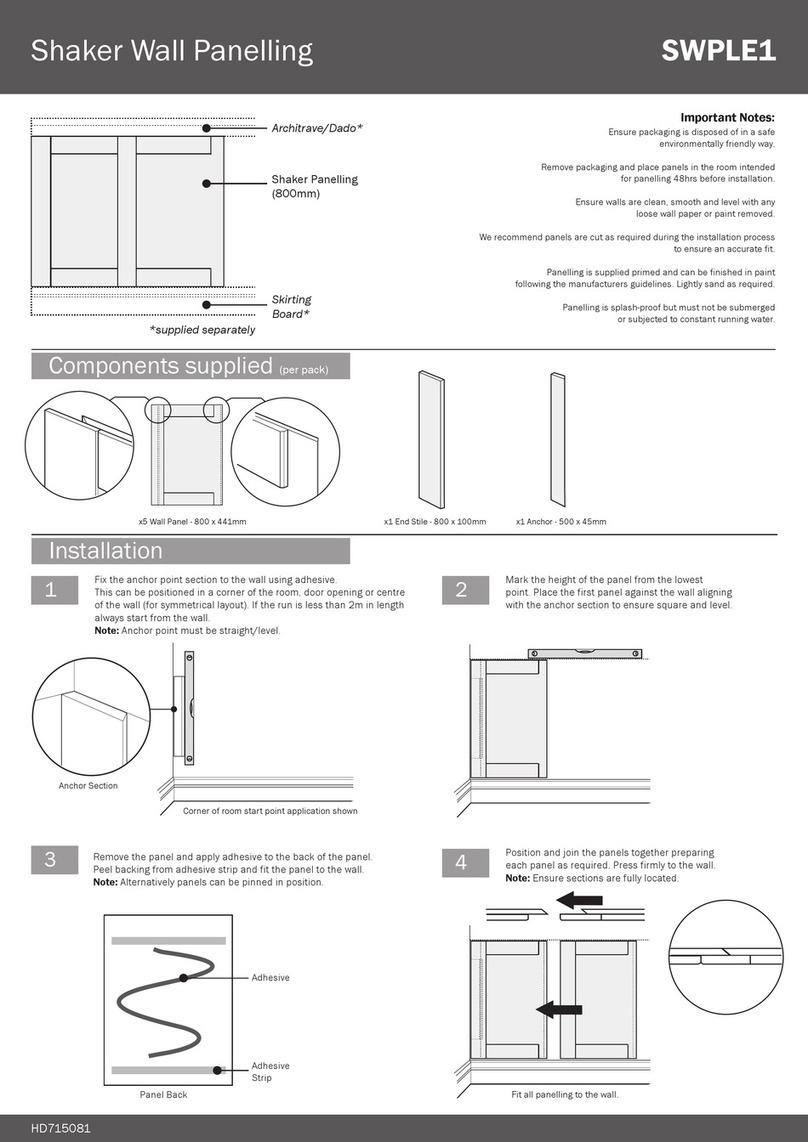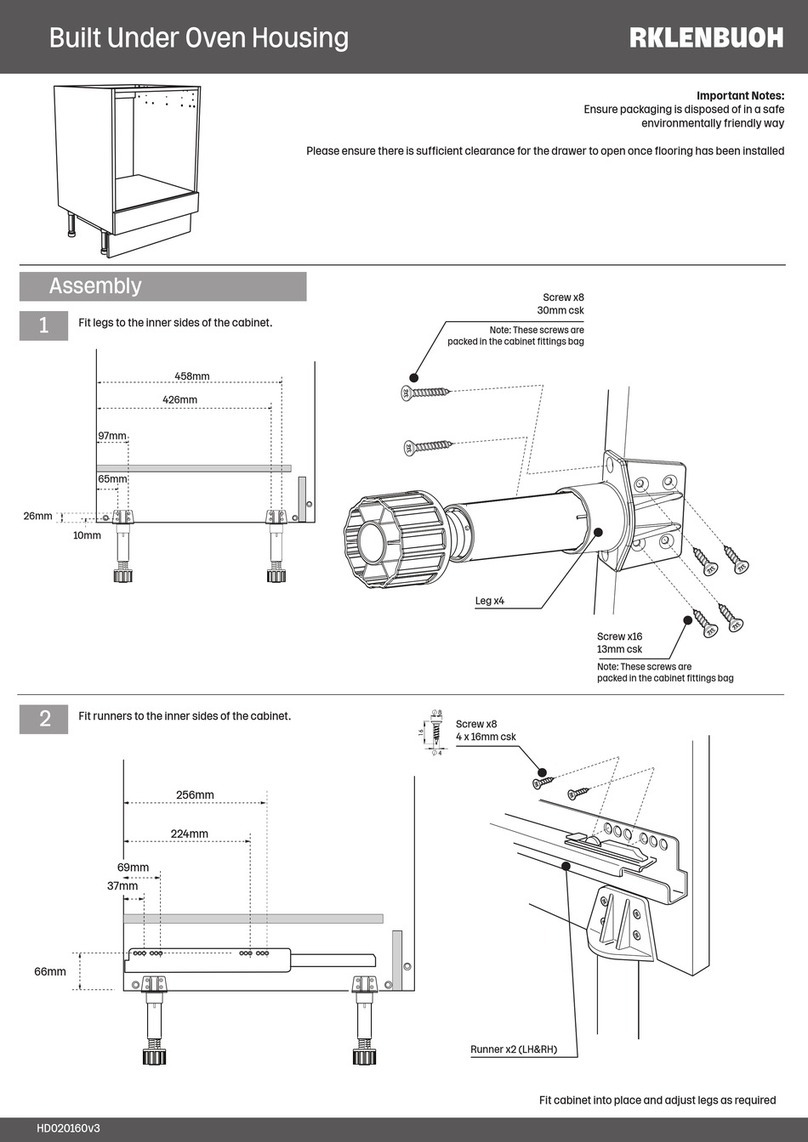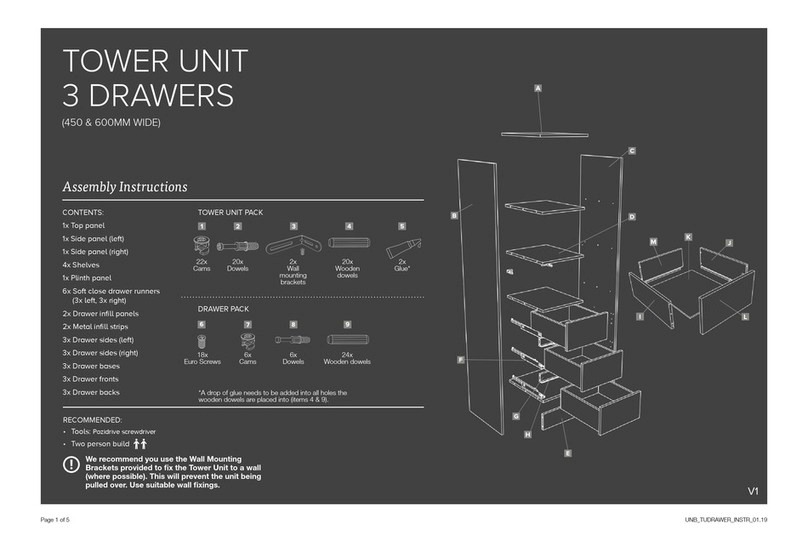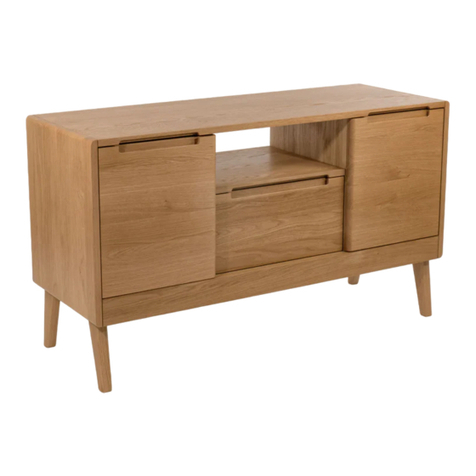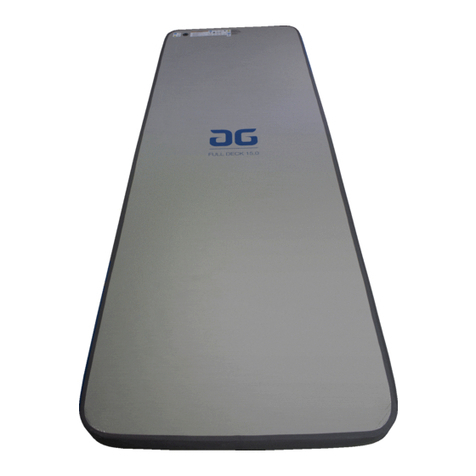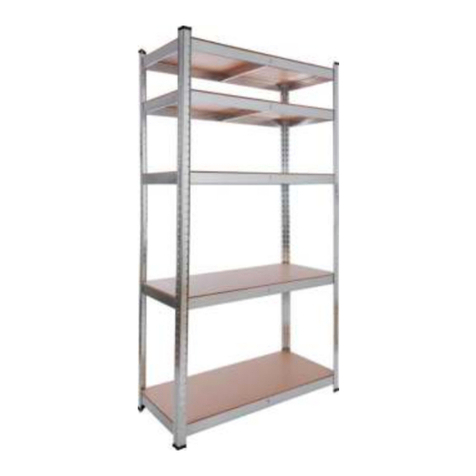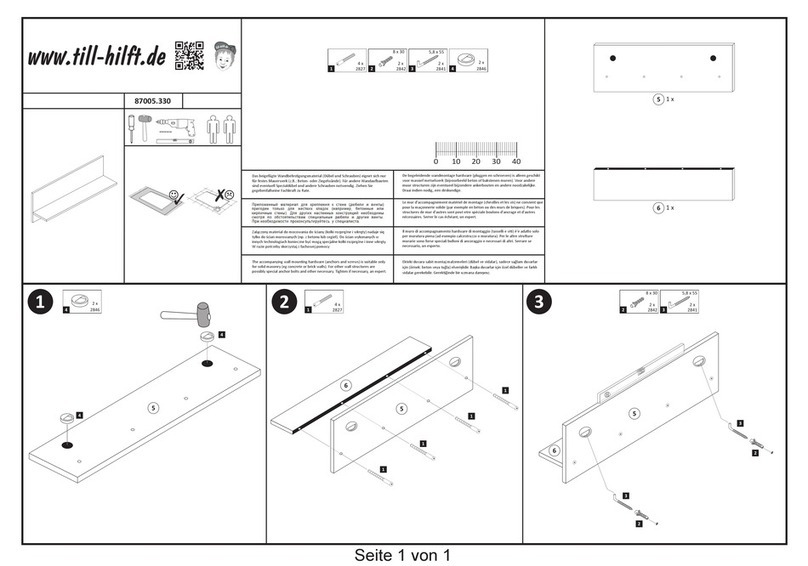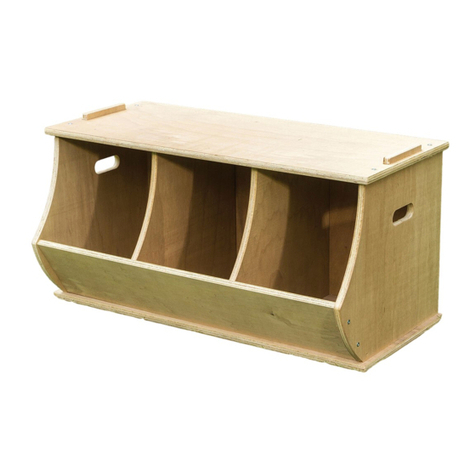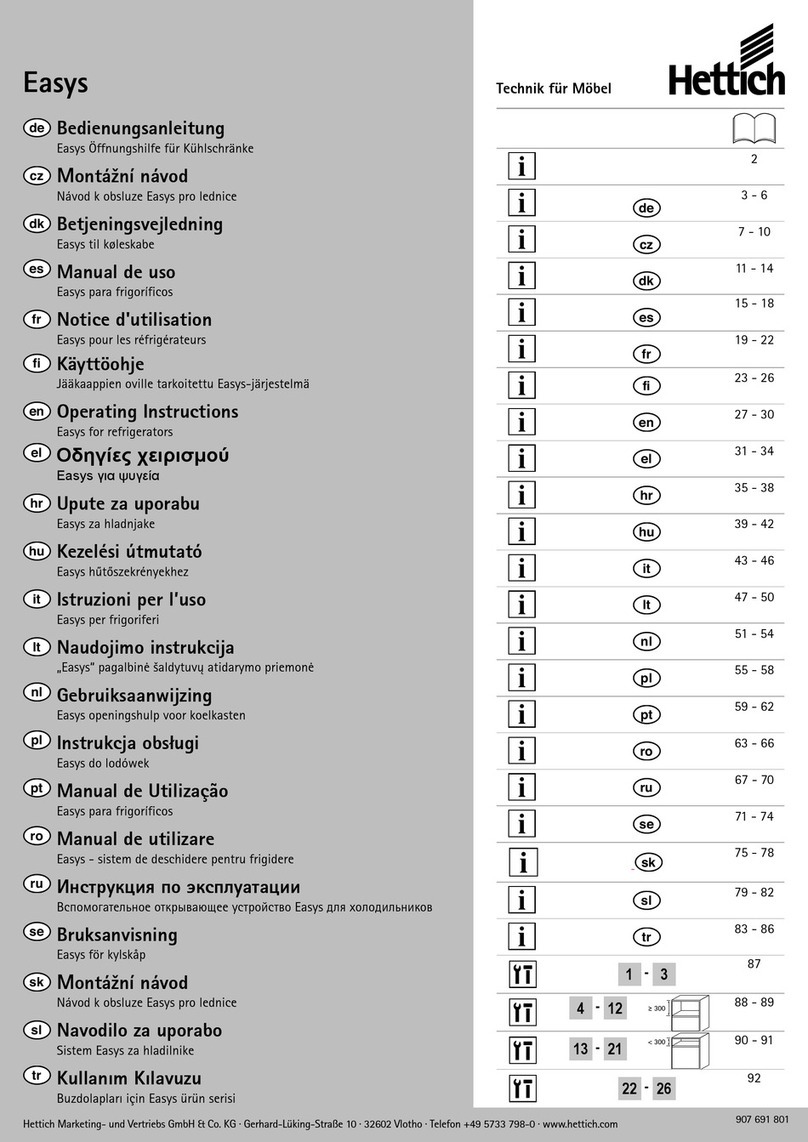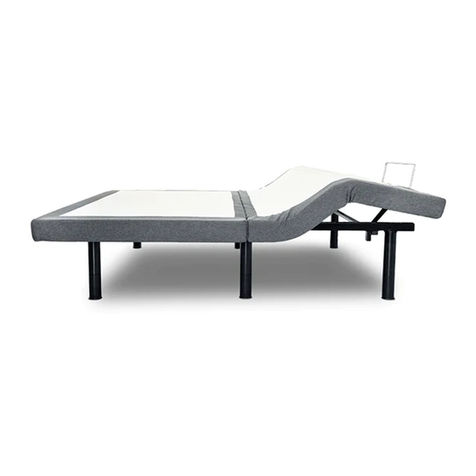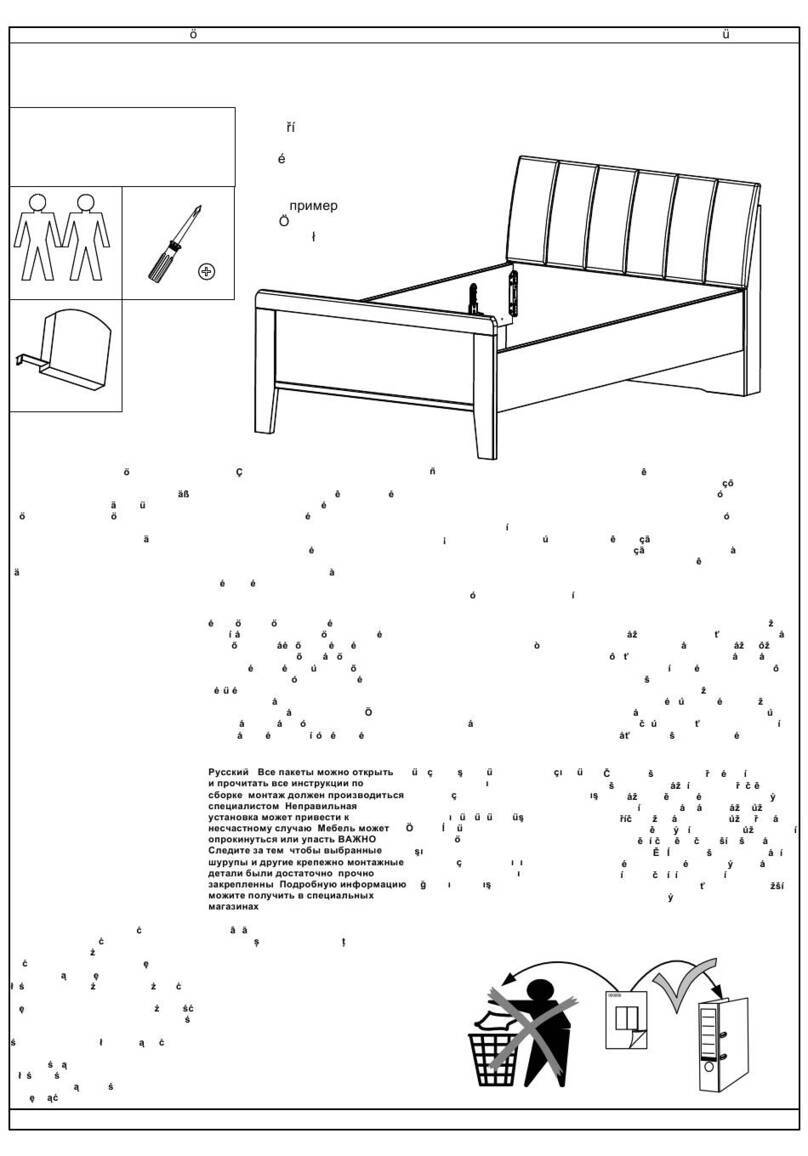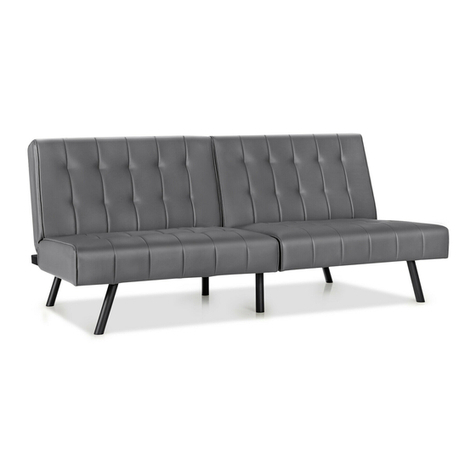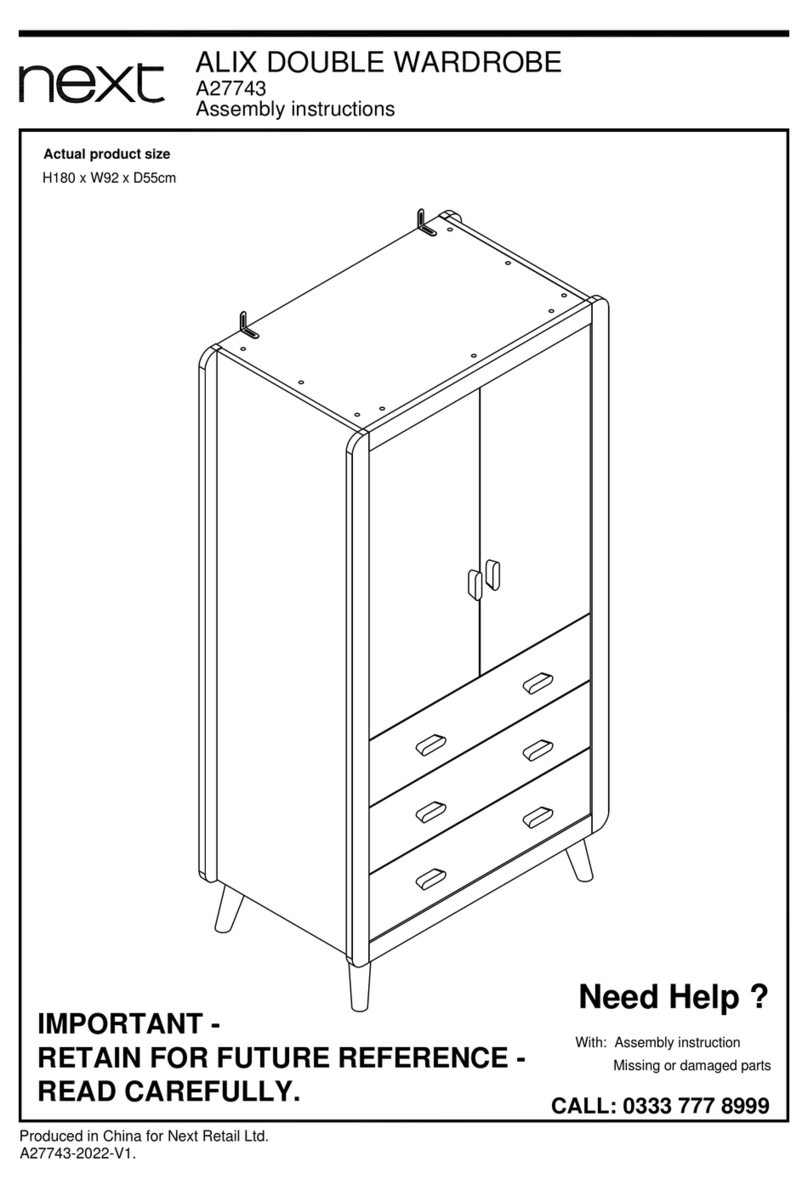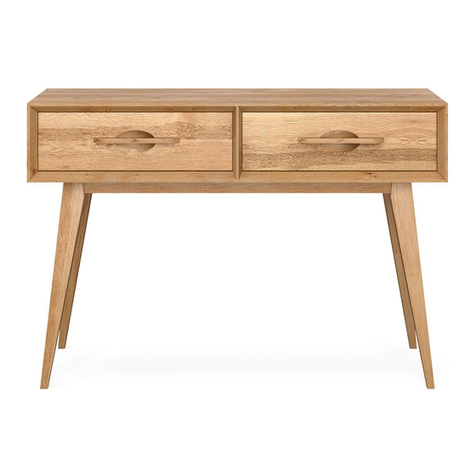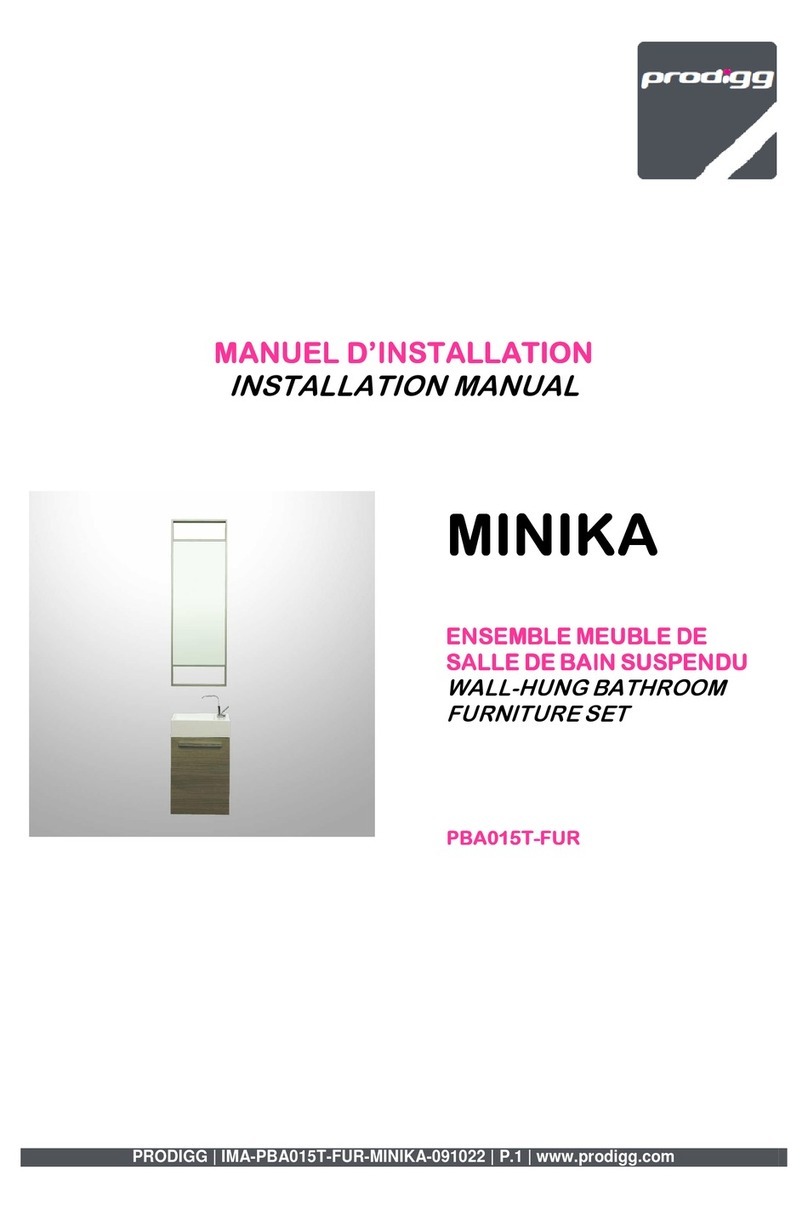
UNB_MULTI_FIXINGS2_INSTR_04.19
2/2
Important note:
Types of structures
Provided in pack
No.2 “Plasterboard” wall plug
For use when attaching light loads on to
plasterboard partitions.
Care &
Maintenance
Safety: Always check the fitting and
location to ensure your safety
in and around the home.
Fitting: From time to time check the fitting
to ensure the wall plugs or screws
do not become loose.
You can use one of the following types of wall plug if your walls are made
of brick, breeze block, concrete, stone or wood.
Important: When drilling into walls always
check that there are no hidden wires or pipes etc.
Tips:
1:
2:
Ensure you use the recommended drill bit to match the wall
plug and hole size.
3:
Ensure you drill the hole straight , do not force the drill or
Provided in pack
No.1 “General Purpose / Concrete or Block
Work” wall plug
Generally aerated blocks should not be used to
support heavy loads, use a specialist fitting in this
case. For light loads, general purpose wall plugs
can be used.
enlarge the hole.
4:
Take extra care when drilling high walls, ceilings and ceramic tiles.
Ensure wall plugs are inserted beyond the thickness of the
ceramic tiles to avoid the tiles splitting or cracking.
Ensure wall plugs are well fitted and are a tight fit in the
NOT supplied
No.3 “Cavity Fixing” wall plug
For use with plasterboard partitions or hollow
wooden doors.
HD_Wall fixings-inst_Ex_03.19
Screws provided
No.4 “Wooden Structure”
If you know you are fixing directly into a wooden
batten, the screws provided do not require a “plug”.
drilled hole.
Wall & Ceiling Fixings:
Make sure that the screws and plugs being used are suitable
for supporting your unit. Always consult a qualified tradesperson
if you are unsure.
You must first identify the type of wall or ceiling you intend to fix
product onto and then contact your local hardware store if the
fixings supplied are not suited to your wall or ceiling type.
AGuide Fixingsto
Important note:
Types of structures
Provided in pack
No.2 “Plasterboard” wall plug
For use when attaching light loads on to
plasterboard partitions.
Care &
Maintenance
Safety: Always check the fitting and
location to ensure your safety
in and around the home.
Fitting: From time to time check the fitting
to ensure the wall plugs or screws
do not become loose.
You can use one of the following types of wall plug if your walls are made
of brick, breeze block, concrete, stone or wood.
Important: When drilling into walls always
check that there are no hidden wires or pipes etc.
Tips:
1:
2:
Ensure you use the recommended drill bit to match the wall
plug and hole size.
3:
Ensure you drill the hole straight , do not force the drill or
Provided in pack
No.1 “General Purpose / Concrete or Block
Work” wall plug
Generally aerated blocks should not be used to
support heavy loads, use a specialist fitting in this
case. For light loads, general purpose wall plugs
can be used.
enlarge the hole.
4:
Take extra care when drilling high walls, ceilings and ceramic tiles.
Ensure wall plugs are inserted beyond the thickness of the
ceramic tiles to avoid the tiles splitting or cracking.
Ensure wall plugs are well fitted and are a tight fit in the
NOT supplied
No.3 “Cavity Fixing” wall plug
For use with plasterboard partitions or hollow
wooden doors.
HD_Wall fixings-inst_Ex_03.19
Screws provided
No.4 “Wooden Structure”
If you know you are fixing directly into a wooden
batten, the screws provided do not require a “plug”.
drilled hole.
Wall & Ceiling Fixings:
Make sure that the screws and plugs being used are suitable
for supporting your unit. Always consult a qualified tradesperson
if you are unsure.
You must first identify the type of wall or ceiling you intend to fix
product onto and then contact your local hardware store if the
fixings supplied are not suited to your wall or ceiling type.
AGuide Fixingsto
Important note:
Types of structures
Provided in pack
No.2 “Plasterboard” wall plug
For use when attaching light loads on to
plasterboard partitions.
Care &
Maintenance
Safety: Always check the fitting and
location to ensure your safety
in and around the home.
Fitting: From time to time check the fitting
to ensure the wall plugs or screws
do not become loose.
You can use one of the following types of wall plug if your walls are made
of brick, breeze block, concrete, stone or wood.
Important: When drilling into walls always
check that there are no hidden wires or pipes etc.
Tips:
1:
2:
Ensure you use the recommended drill bit to match the wall
plug and hole size.
3:
Ensure you drill the hole straight , do not force the drill or
Provided in pack
No.1 “General Purpose / Concrete or Block
Work” wall plug
Generally aerated blocks should not be used to
support heavy loads, use a specialist fitting in this
case. For light loads, general purpose wall plugs
can be used.
enlarge the hole.
4:
Take extra care when drilling high walls, ceilings and ceramic tiles.
Ensure wall plugs are inserted beyond the thickness of the
ceramic tiles to avoid the tiles splitting or cracking.
Ensure wall plugs are well fitted and are a tight fit in the
NOT supplied
No.3 “Cavity Fixing” wall plug
For use with plasterboard partitions or hollow
wooden doors.
HD_Wall fixings-inst_Ex_03.19
Screws provided
No.4 “Wooden Structure”
If you know you are fixing directly into a wooden
batten, the screws provided do not require a “plug”.
drilled hole.
Wall & Ceiling Fixings:
Make sure that the screws and plugs being used are suitable
for supporting your unit. Always consult a qualified tradesperson
if you are unsure.
You must first identify the type of wall or ceiling you intend to fix
product onto and then contact your local hardware store if the
fixings supplied are not suited to your wall or ceiling type.
AGuide Fixingsto
Important note:
Types of structures
Provided in pack
No.2 “Plasterboard” wall plug
For use when attaching light loads on to
plasterboard partitions.
Care &
Maintenance
Safety: Always check the fitting and
location to ensure your safety
in and around the home.
Fitting: From time to time check the fitting
to ensure the wall plugs or screws
do not become loose.
You can use one of the following types of wall plug if your walls are made
of brick, breeze block, concrete, stone or wood.
Important: When drilling into walls always
check that there are no hidden wires or pipes etc.
Tips:
1:
2:
Ensure you use the recommended drill bit to match the wall
plug and hole size.
3:
Ensure you drill the hole straight , do not force the drill or
Provided in pack
No.1 “General Purpose / Concrete or Block
Work” wall plug
Generally aerated blocks should not be used to
support heavy loads, use a specialist fitting in this
case. For light loads, general purpose wall plugs
can be used.
enlarge the hole.
4:
Take extra care when drilling high walls, ceilings and ceramic tiles.
Ensure wall plugs are inserted beyond the thickness of the
ceramic tiles to avoid the tiles splitting or cracking.
Ensure wall plugs are well fitted and are a tight fit in the
NOT supplied
No.3 “Cavity Fixing” wall plug
For use with plasterboard partitions or hollow
wooden doors.
HD_Wall fixings-inst_Ex_03.19
Screws provided
No.4 “Wooden Structure”
If you know you are fixing directly into a wooden
batten, the screws provided do not require a “plug”.
drilled hole.
Wall & Ceiling Fixings:
Make sure that the screws and plugs being used are suitable
for supporting your unit. Always consult a qualified tradesperson
if you are unsure.
You must first identify the type of wall or ceiling you intend to fix
product onto and then contact your local hardware store if the
fixings supplied are not suited to your wall or ceiling type.
AGuide Fixingsto
No.1 / Nr.1 / N. 1
No.3 / Nr.3 / N. 3
No.2 / Nr.2 / N. 2
No.4 / Nr.4 / N. 4
EN: “General Purpose / Concrete or Block Work” wall plug.
GE: Mehrzweck/Beton- oder Ziegelmauerwerk-Dübel.
FR: Mèches tous usages/béton ou parpaing.
RO: Diblul nr. 1 „Uz universal/beton sau bolțari”.
IT: Tassello per “uso generico / opere in cemento o blocchi.
FR: Mèches pour fixation en creux.
GE: Hohlraum-Dübel.
EN: “Cavity Fixing” wall plug.
RO: Diblul nr. 3 „Fixarea în orificii”.
IT: Tassello “con alette”.
RO: „Structură de lemn”.
FR: Structure en bois.
GE: Holzdübel.
EN: “Wooden Structure”.
IT: “Struttura in legno”.
GE: Gipskartonplatten-Dübel.
EN: “Plasterboard” wall plug.
FR: Mèches pour plaques au plâtre.
RO: Diblul nr. 2 „Placă de gips-carton”.
IT: Tassello per “cartongesso”.
EN: For use with plasterboard partitions or hollow wooden doors.
GE: Für Gipskartonplatten oder hohle Wabentüren.
FR: À utiliser sur des cloisons en plaque de plâtre ou des portes en bois creuses.
RO: Pentru utilizare pe pereții despărțitori din gips-carton sau în ușile din lemn goale pe dinăuntru.
IT: Per l’uso su pareti divisorie in cartongesso o porte in legno tamburato.
EN: If you know you are xing directly into a wooden batten, the screws provided do not require a “plug”.
IT: Se si prevede di eettuare il ssaggio direttamente su un listello in legno, le viti fornite non necessitano di “tassello”.
GE: Wenn Sie etwas direkt an einer Holzleiste/Dachlatte befestigen, können Sie die gelieferten Schrauben ohne Dübel verwenden.
FR: Si vous préparez une installation dans un support en bois massif, vous n’avez pas besoin de mèche.
RO: Dacă știți că xați direct într-o scândură groasă de lemn, șuruburile din dotare nu necesită „diblu”.
EN: For use when attaching light loads on to plasterboard partitions.
GE: Zur Befestigung leichter Lasten an Gipskartonwänden.
FR: À utiliser pour xer des charges légères sur des cloisons en plaques de plâtre.
RO: Pentru utilizare la xarea greutăților mici pe pereții despărțitori din gips-carton.
IT: Per l’assione di carichi leggeri su pareti divisorie in cartongesso.
EN: Generally aerated blocks should not be used to support heavy loads, use a specialist tting in this case. For light loads,
general purpose wall plugs can be used.
GE: Gasbetonblöcke sollten nicht zur Aufnahme schwerer Lasten verwendet werden. Verwenden Sie in diesem Fall eine
spezielle Halterung. Für leichte Lasten können Universaldübel verwendet werden.
FR: En général, les blocs en ciment à air occlus ne doivent pas être utilisés pour supporter des charges lourdes. Dans ce cas,
utilisez une xation spécialisée. Pour les charges légères, les mèches murales tous usages sont recommandées.
RO: Bolțarii aerați în general nu trebuie să e utilizați pentru a susține greutăți mari. Utilizați un specialist în montaje în
acest caz. Pentru greutăți mici, pot utilizate diblurile de uz universal.
IT: In generale, non utilizzare blocchi aerati per sostenere carichi pesanti, ma usare invece dei ssaggi speciali. I tasselli per
uso generico possono essere utilizzati in presenza di carichi leggeri.
EN: Types of structures:
You can use one of the following types of
wall plug if your walls are made of brick,
breeze block, concrete, stone or wood.
FR: Types de structures:
Vous pouvez utiliser un des types de mèches
suivants lorsque le mur est en briques, en
parpaings, en béton, en pierre ou en bois.
RO: Tipuri de structuri
Puteți utiliza unul dintre următoarele tipuri
de dibluri, dacă pereții sunt din cărămidă,
bolțari, beton, piatră sau lemn.
IT: Tipi di strutture:
Se le pareti sono di mattoni, calcestruzzo,
cemento, pietra o legno, è possibile usare
uno dei tipi di tasselli di seguito indicati.
GE: Baumaterialien
Für Wände aus Ziegelsteinen, Gasbetonblöcken,
Kalksandstein, Beton, Stein oder Holz können Sie
einen der folgenden Wanddübeltypen verwenden.
